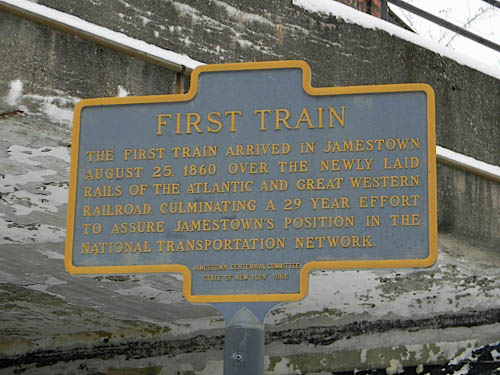 |
Western New York & Pennsylvania Meadville-Olean line |
The western end of the Western New York & Pennsylvania Railroad's 190 mile east-west mainline begins at its operations center in Olean, New York, and travels west across the state line to a connection with the Norfolk Southern's Youngstown line at Meadville, Pennsylvania. Portions of this route include the Erie Railroad's historic broad gauge route that dates back to 1852. Most of the WNY&P system is leased from Norfolk Southern, but the 42 mile segment from Corry to Meadville is owned outright by the shortline. Along this portion of the mainline, the WYNY&P maintains interchange with the Buffalo & Pittsburgh's Erie line at Corry, PA and its Buffalo line at Salamanca, NY.
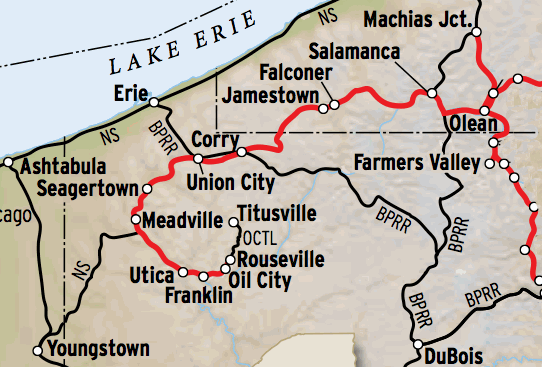
 Meadville, Pa
Meadville, Pa

Meadville yard overhead / Google Maps

Click to see the Meadville yard area plotted on a Google Maps page

western end of yard / Meadville, Pa / Dec 2012 / RWH
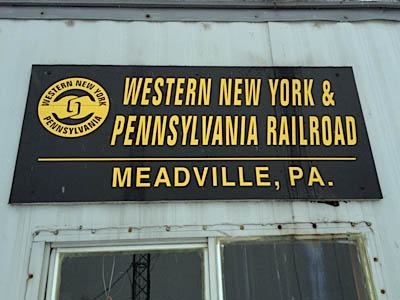
Meadville, Pa / Jan 2012 / RWH
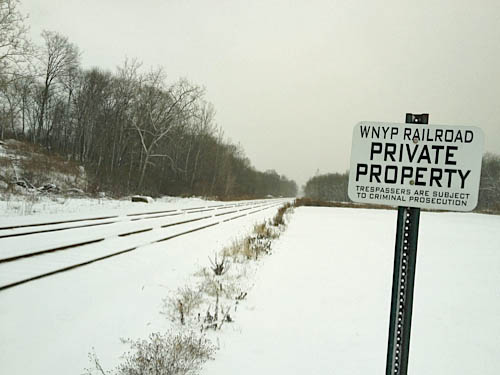
westbound view / Jan 2012 / RWH
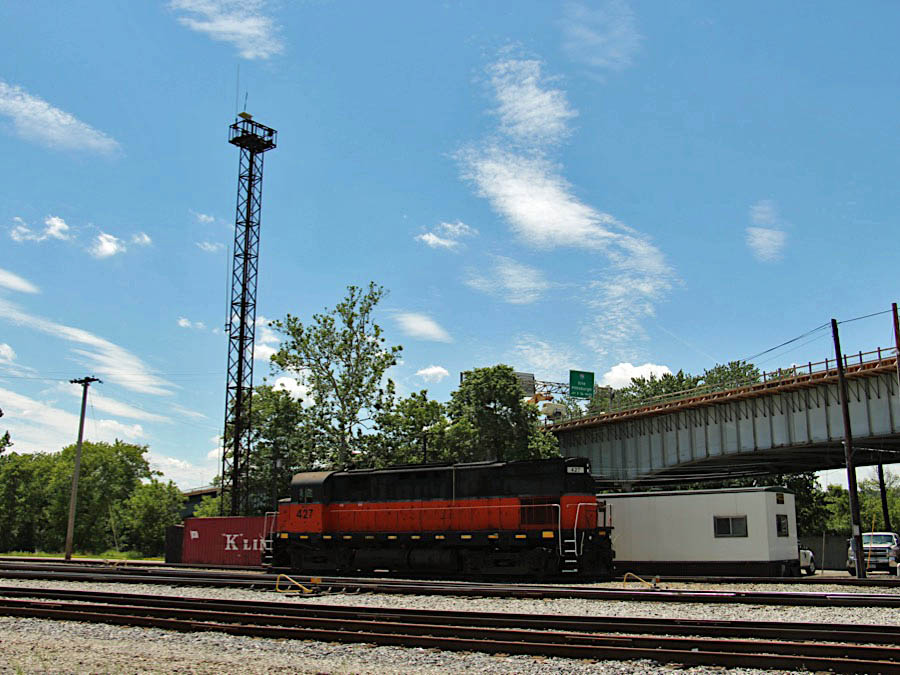
Meadville, Pa / Jun 2016 / RWH

Meadville, Pa / Jun 2016 / RWH
 Cambridge Springs, Pa
Cambridge Springs, Pa
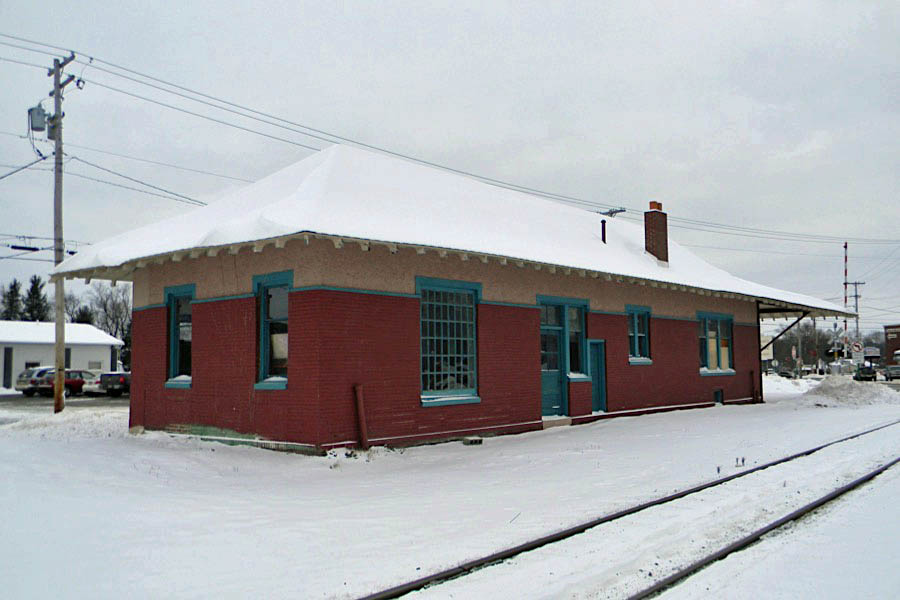
ex ERIE depot / Cambridge Springs, Pa / Dec 2012 / RWH

Click to see this location plotted on a Google Maps page
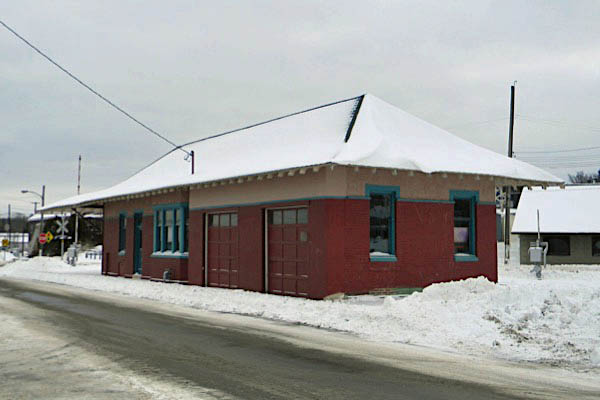
Cambridge Springs, Pa / Dec 2012 / RWH

eastbound view / Cambridge Springs, Pa / Dec 2012 / RWH
 Corry, Pa
Corry, Pa

ex ERIE depot / Corry, Pa / Dec 2012 / RWH

Click to see this location plotted on a Google Maps page
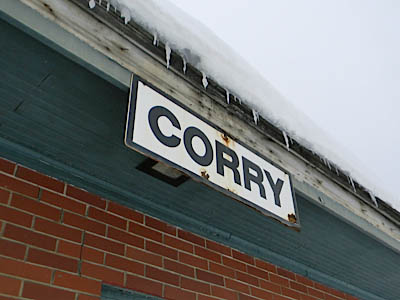
Dec 2012 / RWH
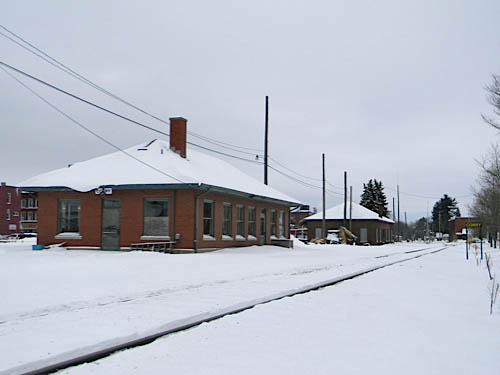
Corry, Pa / Dec 2012 / RWH
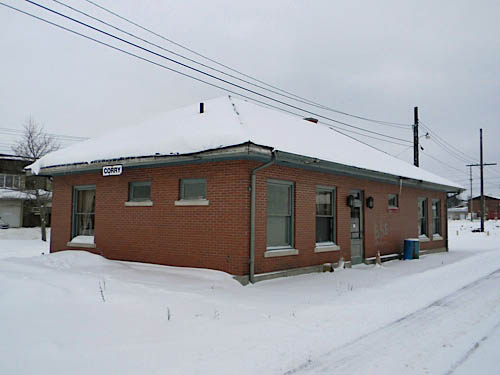
Corry, Pa / Dec 2012 / RWH
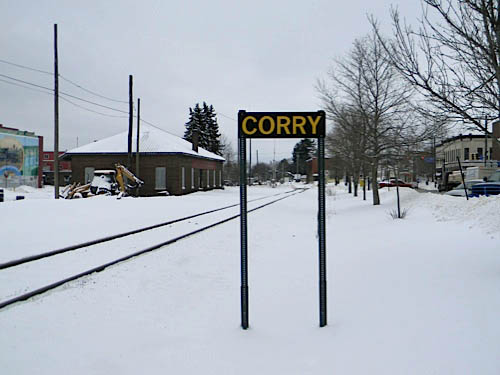
eastbound view / Corry, Pa / Dec 2012 / RWH
Corry diamond
At Corry, Pa, the Western New York & Pennsylvania mainline crosses the Buffalo & Pittsburgh's Erie line on a diamond. The B&P's Erie line is the former Allegheny & Eastern Railroad mainline.
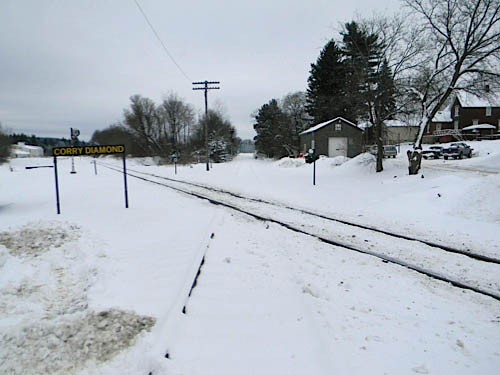
eastbound view along B&P axis / Corry, Pa / Dec 2012 / RWH
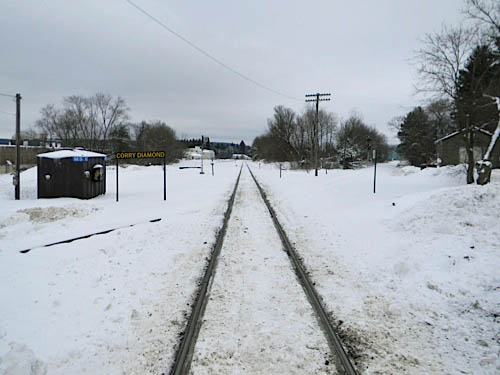
eastbound view along WNY&P axis / Corry, Pa / Dec 2012 / RWH

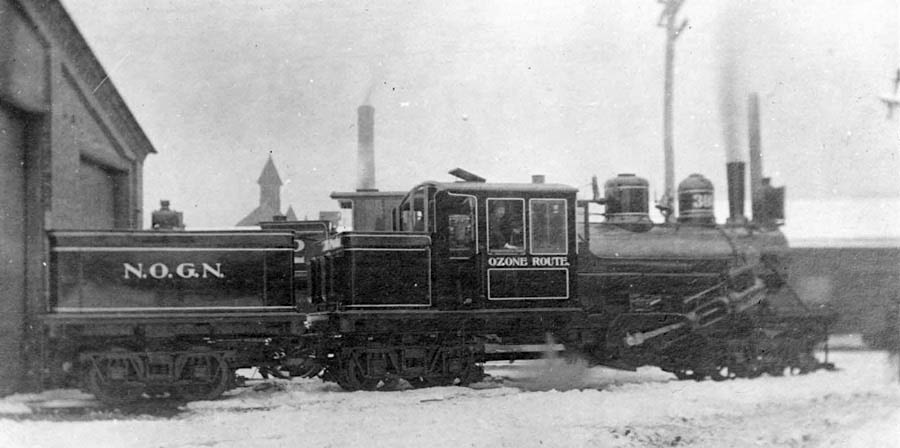 A Climax locomotive is a type of geared steam locomotive in which the two steam cylinders are attached to a transmission located under the center of the boiler. This transmits power to driveshafts running to the front and rear trucks. Rush S. Battles patented the basic design in 1891. Battles' design had horizontal cylinders connected to the drive shaft through a 2-speed transmission. The drive shaft passed just above the axle centers, requiring the use of hypoid bevel gears to transfer power to each axle. Unlike the later and somewhat similar Heisler design, there were no side rods on the trucks and all gearing was open, exposed to the elements. Battles' patent describes the core design that became the Class B Climax, and his patent illustrations show the name Climax emblazoned on the locomotive cab. Charles D. Scott, an inventor who had previously proposed a less successful geared steam locomotive, patented improved versions of Battles' trucks in 1892 and 1893. Scott's 1892 patent was the basis of the Class A Climax. His 1892 patent included gear-case enclosures. All Climax locomotives were built by the Climax Manufacturing Company (later renamed to the Climax Locomotive Works), of Corry, Pennsylvania. In addition, an agency and service facility was established in Seattle, Washington to sell and maintain locomotives for west coast buyers. Production began in 1888 and the last Climax locomotive was produced in 1928. Between 1000 and 1100 were built.
A Climax locomotive is a type of geared steam locomotive in which the two steam cylinders are attached to a transmission located under the center of the boiler. This transmits power to driveshafts running to the front and rear trucks. Rush S. Battles patented the basic design in 1891. Battles' design had horizontal cylinders connected to the drive shaft through a 2-speed transmission. The drive shaft passed just above the axle centers, requiring the use of hypoid bevel gears to transfer power to each axle. Unlike the later and somewhat similar Heisler design, there were no side rods on the trucks and all gearing was open, exposed to the elements. Battles' patent describes the core design that became the Class B Climax, and his patent illustrations show the name Climax emblazoned on the locomotive cab. Charles D. Scott, an inventor who had previously proposed a less successful geared steam locomotive, patented improved versions of Battles' trucks in 1892 and 1893. Scott's 1892 patent was the basis of the Class A Climax. His 1892 patent included gear-case enclosures. All Climax locomotives were built by the Climax Manufacturing Company (later renamed to the Climax Locomotive Works), of Corry, Pennsylvania. In addition, an agency and service facility was established in Seattle, Washington to sell and maintain locomotives for west coast buyers. Production began in 1888 and the last Climax locomotive was produced in 1928. Between 1000 and 1100 were built.
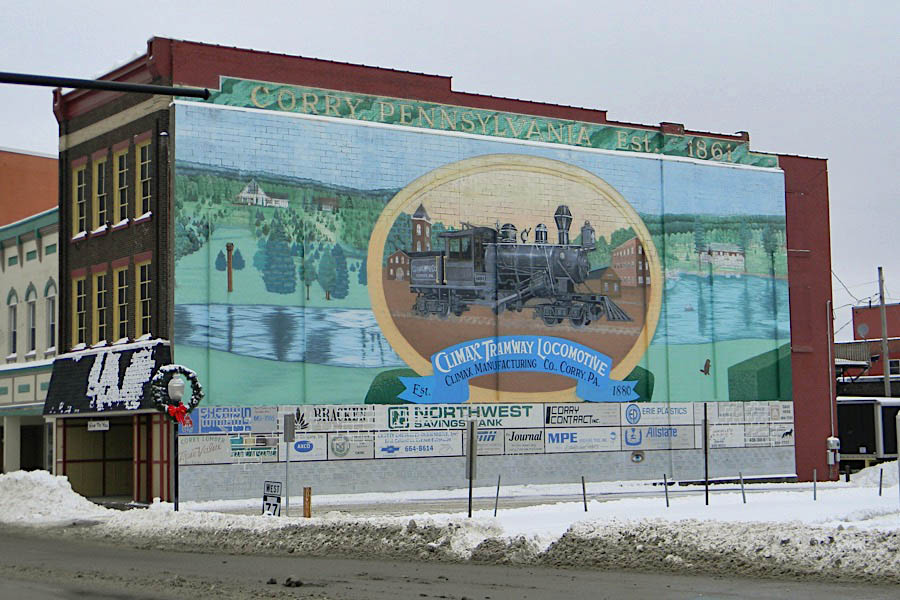
Climax mural / Corry, Pa / Dec 2012 / RWH
 Jamestown, NY
Jamestown, NY
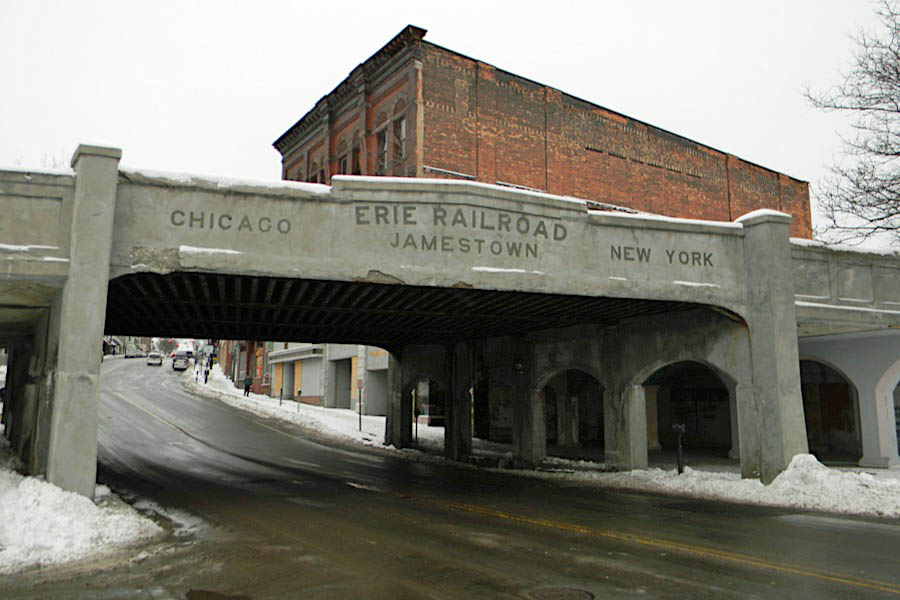
former ERIE railroad bridge / Jamestown, NY / Dec 2012 / RWH

Click to see this location plotted on a Google Maps page
 Falconer, NY
Falconer, NY
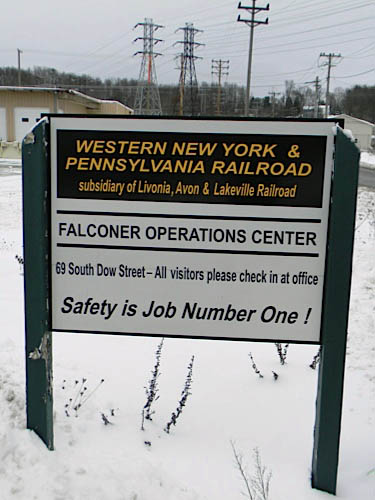
Dec 2012 / RWH
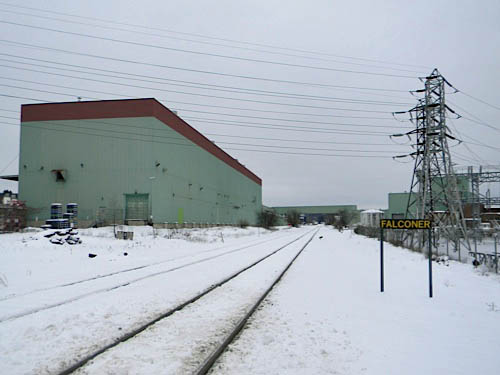
westbound view / Falconer, NY / Dec 2012 / RWH

former WNY&P locomotive shop / Falconer, NY / Dec 2012 / RWH

Click to see this location plotted on a Google Maps page
 Salamanca, NY
Salamanca, NY
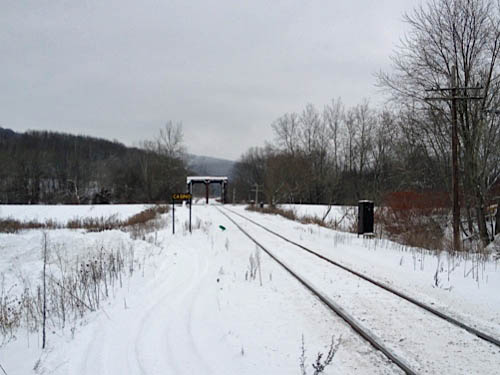
eastbound view / Salamanca, NY / Dec 2012 / RWH
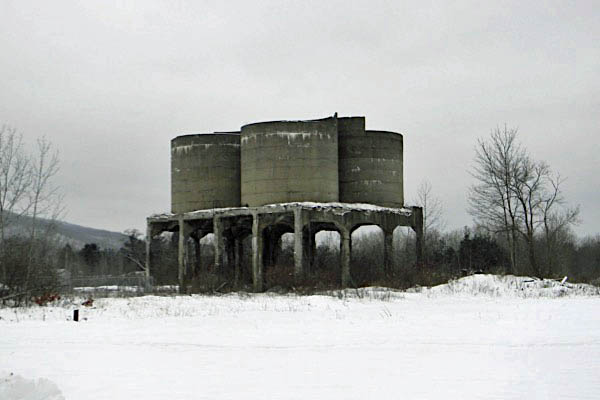
Salamanca, NY / Dec 2012 / RWH
 Carrolton, NY
Carrolton, NY
At Carrolton, New York -- no more than a wide spot along New York state highway 417 -- the Buffalo & Pittsburgh's north-south Buffalo line crosses over the Western New York & Pennsylvania on an interesting double-track truss bridge (now single-track).
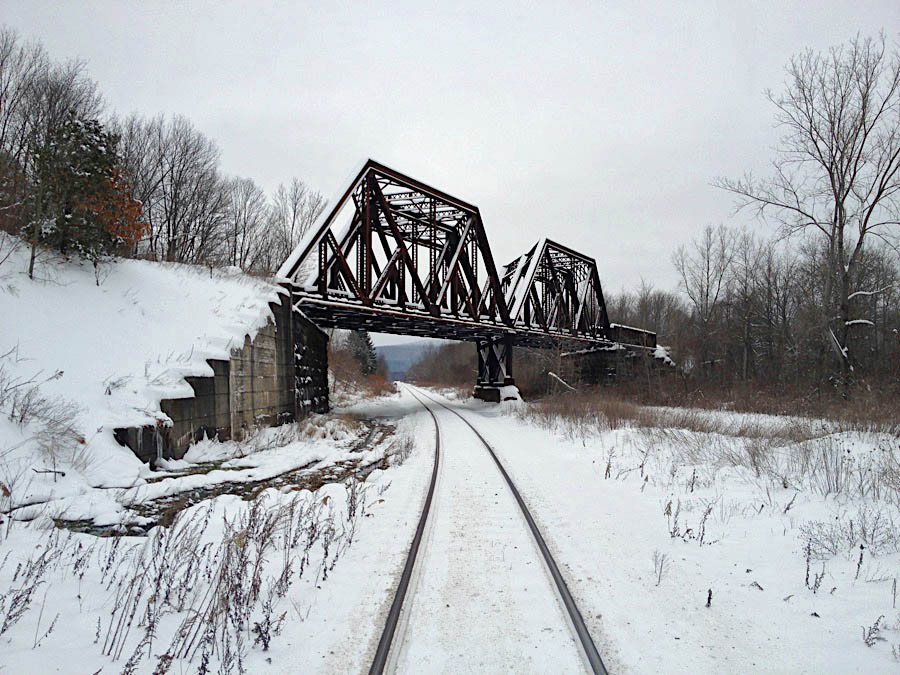
eastbound view under B&P line / Carrolton, NY / Dec 2012 / RWH

westbound view / Carrolton, NY / Dec 2012 / RWH

southbound view of B&P line / Carrolton, NY / Dec 2012 / RWH

Click to see this location plotted on a Google Maps page

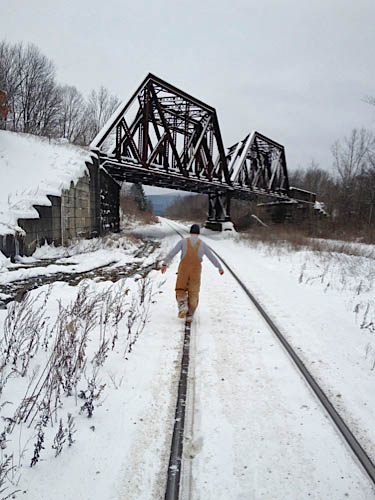 As a southern boy who grew up railfanning in the heat and humidity of the Deep South, standing on simmering black asphalt grade crossings and watching trains from holes in buggy pine forests, I've discovered in Pennsylvania in recent years another kind of sport: winter train chasing. Bundle up in layers, dust off your boots, and don the gloves, for in waiting by a crossing for the appearance of a local that harsh wind and low temperature can both do you in. But making the solid chill worthwhile are the views. When laden with a fresh blanket of snow, the trackside vistas and locations are simply terrific. Nothing beats a rolling up on a crossing, rolling down the window, and catching a right of way shot with two steel ribbons on white, and nothing else. Not only that, but the fields of cotton white make listening for that forthcoming movement all the easier!
As a southern boy who grew up railfanning in the heat and humidity of the Deep South, standing on simmering black asphalt grade crossings and watching trains from holes in buggy pine forests, I've discovered in Pennsylvania in recent years another kind of sport: winter train chasing. Bundle up in layers, dust off your boots, and don the gloves, for in waiting by a crossing for the appearance of a local that harsh wind and low temperature can both do you in. But making the solid chill worthwhile are the views. When laden with a fresh blanket of snow, the trackside vistas and locations are simply terrific. Nothing beats a rolling up on a crossing, rolling down the window, and catching a right of way shot with two steel ribbons on white, and nothing else. Not only that, but the fields of cotton white make listening for that forthcoming movement all the easier!
 Olean, NY
Olean, NY
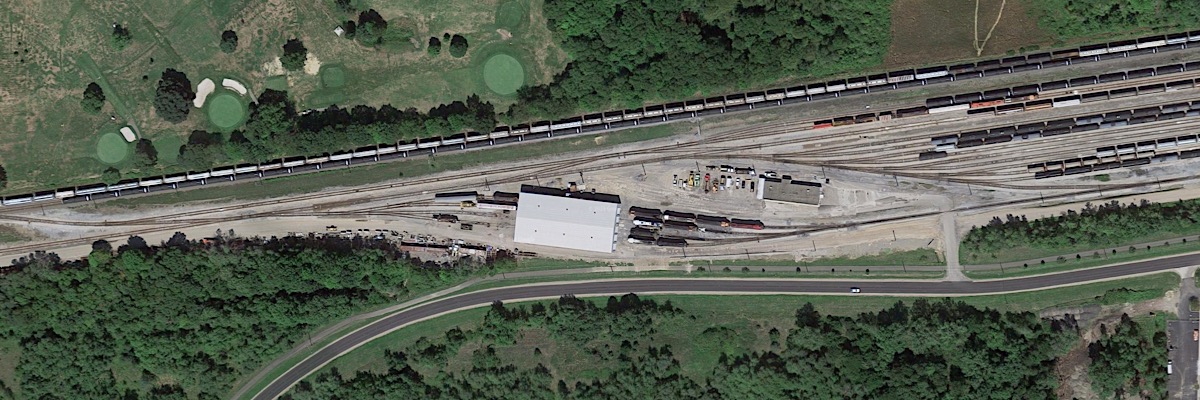
Olean shops overhead / Google Maps

locomotive shops / Olean, NY / Dec 2012 / RWH

Click to see the Olean shops and yard area plotted on a Google Maps page

Olean, NY / Dec 2012 / RWH

sanding tower / Olean, NY / Dec 2012 / RWH

Olean, NY / Dec 2012 / RWH

Adding the Buffalo Line boosted the WNY&P’s size 40 percent, and prompted a shift in traffic patterns. All trains now operate as turns out of either Olean or Meadville, returning home each night. Olean became the nerve center and headquarters of the WNY&P, a transition completed in late 2009 with the relocation of dispatching from Falconer, N.Y., the installation of a computer-aided dispatching system, and the opening of a four-track locomotive shop. Previously, shop work had been done at a smaller facility in Falconer, which is now a maintenance-of-way base. Olean’s yard and office building were already in place, built in the 1970s by the New York State Department of Transportation as part of a line relocation to make room for Interstate 86. Much of the cost of the WNY&P’s new $1.1 million Olean engine shop will be earned back in fuel savings accrued from housing much of the diesel fleet inside during frigid Northern winters, rather than having them idle all night outdoors. The railroad estimates this saved $300,000 over the winter of 2010-2011. (The three locomotives typically based in Meadville survive the cold winter nights by being plugged into electric engine-block heaters.)
Karl Zimmermann - TRAINS - 2012
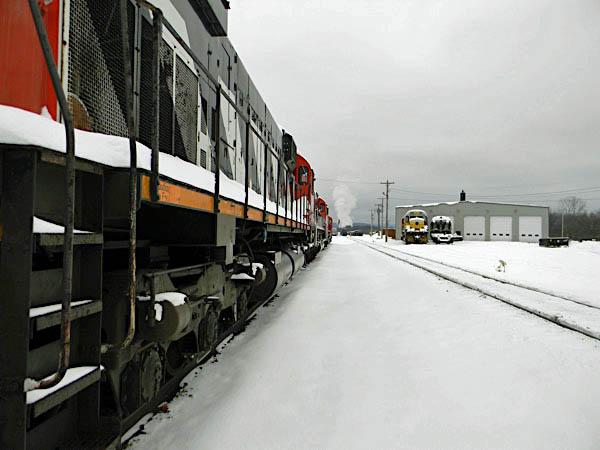
storage line / Olean, NY / Dec 2012 / RWH

storage line / Olean, NY / Dec 2012 / RWH
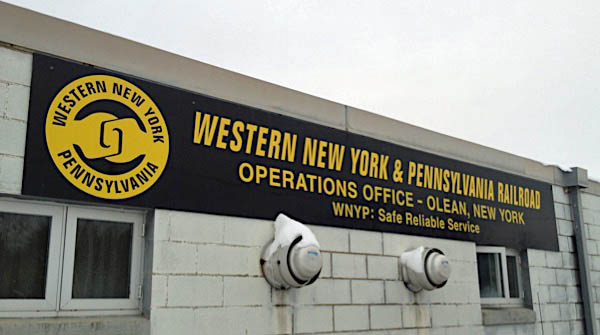
Olean, NY / Dec 2012 / RWH

